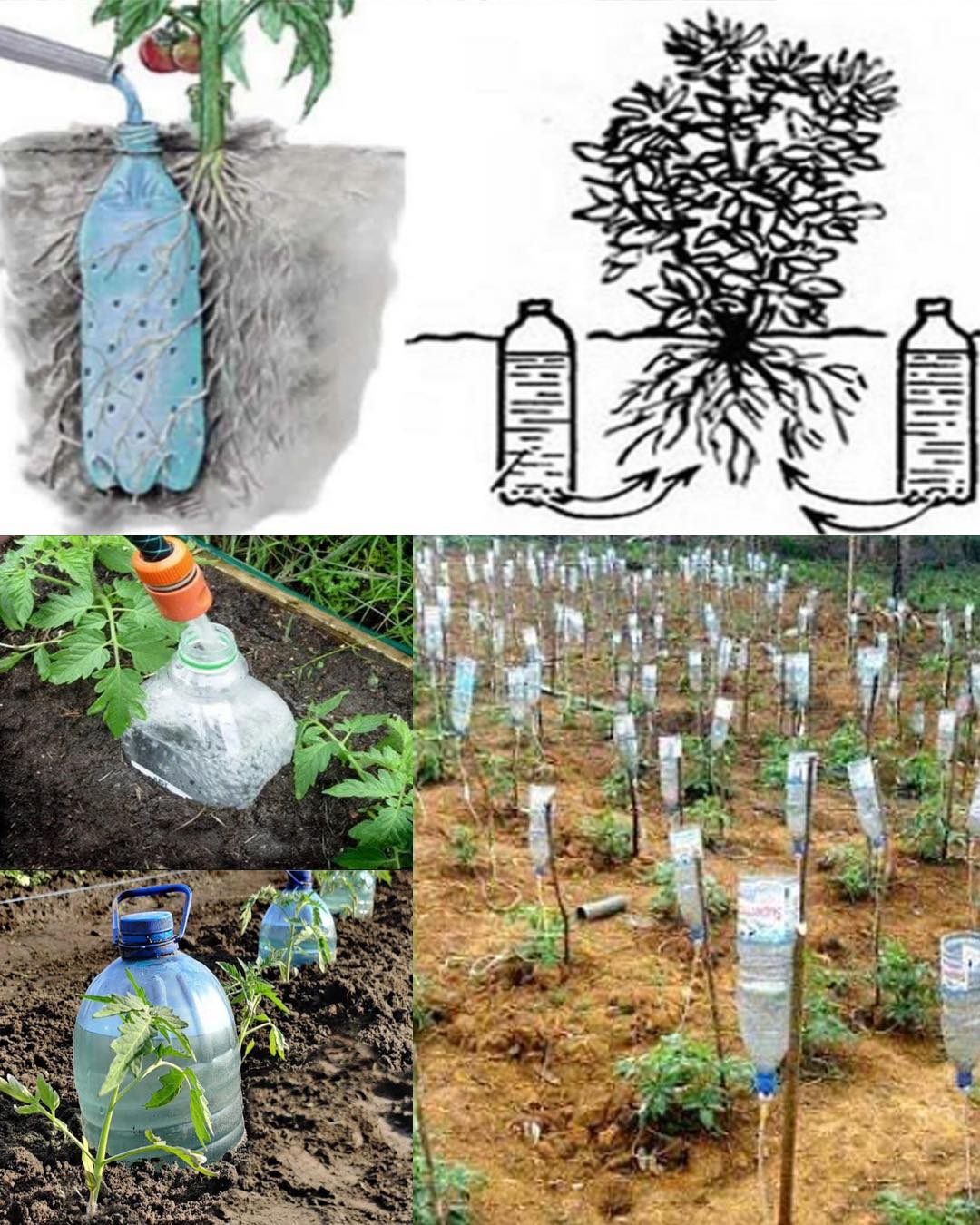Keeping your vegetable garden hydrated is essential for healthy plant growth, but manually watering can be time-consuming and prone to inconsistency. Fortunately, with a little DIY ingenuity, you can create an automatic vegetable waterer using a simple plastic bottle. This cost-effective solution ensures your plants receive the moisture they need while saving you time and effort in the process.

Materials Needed:
Plastic bottle (1 or 2-liter works well)
Sharp knife or scissors
Drill or push pin
Nylon string or cotton twine
Watering can or hose
Potting soil (optional)
Step 1: Prepare the Bottle
Start by removing any labels and cleaning the plastic bottle thoroughly. Ensure it’s completely dry before proceeding. Then, using a sharp knife or scissors, carefully cut off the bottom of the bottle. This will serve as the reservoir for the water.
Step 2: Create Watering Holes
With the bottle positioned upside down, use a drill or push pin to make small holes in the cap end of the bottle. These holes will allow water to slowly drip out and irrigate the soil. Make sure the holes are small enough to control the flow of water.
Step 3: Attach String for Capillary Action
Cut a piece of nylon string or cotton twine long enough to reach from the bottom of the bottle to the soil in your vegetable garden. Thread one end of the string through the cap of the bottle and secure it in place. This string will act as a wick, drawing water from the bottle to the soil through capillary action.
Step 4: Bury the Bottle
Dig a hole in the soil near the base of your vegetable plants, making sure it’s deep enough to accommodate the bottle. Place the bottle upside down in the hole, ensuring the cap with the string is buried securely in the soil.
Step 5: Fill the Bottle and Test
Fill the plastic bottle with water using a watering can or hose. Once filled, replace the cap tightly. The water should begin to slowly drip out of the holes in the cap. Adjust the tightness of the cap or the size of the holes if necessary to control the flow of water.

Step 6: Monitor and Refill as Needed
Monitor the water level in the bottle regularly and refill as needed to ensure a consistent water supply to your vegetable plants. Depending on the size of the bottle and the water requirements of your plants, you may need to refill every few days or as needed.
By following these simple steps, you can create an automatic vegetable waterer using a plastic bottle, ensuring your garden stays hydrated and thriving with minimal effort. This DIY solution is not only cost-effective but also environmentally friendly, making it a win-win for both you and your plants.
News
JJ Redick reacts to Luka Doncic trade for Anthony Davis
In one of the most jaw-dropping moves of the season, the NBA landscape was rocked by the blockbuster trade involving Luka Dončić and Anthony Davis—a swap that has sent ripples of excitement, disbelief, and heated discussion through the league. Among…
Anthony Davis FULL reaction to trade to Mavericks for Luka Doncic
In a blockbuster move that sent shockwaves through the NBA and left fans reeling, Anthony Davis has been traded to the Dallas Mavericks in exchange for Luka Dončić. In the immediate aftermath of the news, Davis took to the media…
Shaq reacts to Dallas Mavericks wanting Kevin Durant after Luka-AD trade 👀
In the constantly shifting world of the NBA, trade rumors and blockbuster moves are a regular part of the season’s drama. The latest twist has fans buzzing: the Dallas Mavericks have reportedly set their sights on acquiring Kevin Durant in…
Donovan Mitchell FILTHY poster dunk on Kristaps Porzingis 😳
In a game filled with high-intensity moments and jaw-dropping highlights, one play in particular has left fans and analysts buzzing about Donovan Mitchell’s latest display of athleticism. Early in the contest, with the atmosphere already charged by an evenly matched…
Joel Embiid hits go-ahead bucket vs Mavs then chats with Anthony Davis after game
In one of the most thrilling contests of the season, Joel Embiid delivered a clutch performance against the Dallas Mavericks, punctuating the game with a go-ahead bucket that sent the home crowd into a frenzy. The atmosphere in the arena…
D’Angelo Russell game winner as Nets hit two 3’s in 3 seconds to win vs Rockets 😱
In one of the most electrifying moments in recent NBA history, D’Angelo Russell delivered an unforgettable game-winner that left fans and commentators in complete awe. With the Brooklyn Nets locked in a tense battle against the Houston Rockets, the outcome…
End of content
No more pages to load











